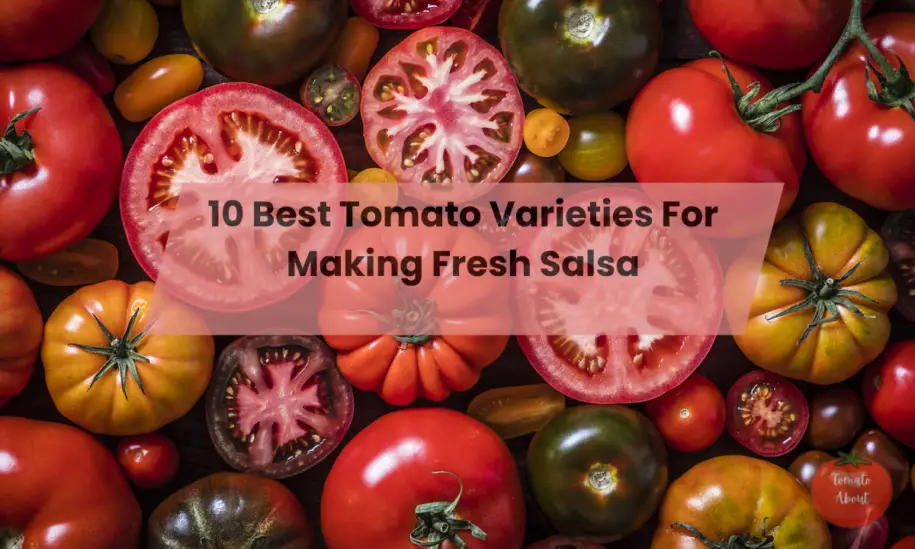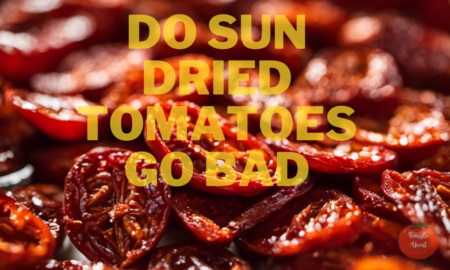A fresh, homemade salsa is one of the best ways to add flavor and spice to meals. But not all salsas are equal – the key to incredible restaurant-worthy salsa is using the right tomatoes. With hundreds of tomato varieties to choose from, it can be overwhelming to know which ones make the tastiest salsa.
After extensive testing, I’ve narrowed it down to the 10 best tomatoes for unbeatable homemade salsa. Keep reading to discover which tomatoes will give your salsa the perfect texture, moisture level, color, and balanced sweet yet tangy flavor.
What Makes the Best Salsa Tomatoes
let’s look at what qualities make these tomatoes excel:
- Meaty flesh – Thick walls and fewer seeds prevent wateriness. Tomatoes should feel heavy for their size.
- Lower moisture – Less juice means the salsa won’t get runny after mixing. Dry tomatoes hold their shape better.
- Uniform size – Grape, cherry, and paste tomatoes are easier to prep than slicing tomatoes of random sizes.
- Bright, rich colors – Vibrant red, yellow, or purple hues just look more appealing. Dark pigments also offer more antioxidants.
- Balanced, complex flavors – The right tomato provides sweet, tangy, and umami notes to balance chili heat.
Roma Tomatoes
Roma tomatoes, also known as Italian or paste tomatoes, are arguably the best type for homemade salsa. Their meaty, dense texture comes from fewer seeds and thicker, drier flesh. This allows Roma tomatoes to hold their shape perfectly when chopped or blended into salsa without getting mushy or watery.
The lower moisture content in Roma tomatoes produces excellent salsa flavor. When raw, they provide a bright, sweet tomato taste with the right amount of acidity to balance out the spiciness. Roma tomatoes also break down well when cooked, making them perfect for simmered salsas too. Look for Romas with smooth, deep red skins and a nice firmness when squeezed.
Grape Tomatoes
Though not technically a distinct variety, grape tomatoes have become a salsa-maker’s secret weapon. Their small, oval shape lends itself to uniform dicing. More importantly, grape tomatoes have juicy flavor and lower moisture thanks to their thicker walls.
Popping a grape tomato in your mouth delivers an explosion of rich tomato essence. They provide tons of flavor without excess liquid that would dilute the salsa. Larger grapes can be sliced in half before mixing in to release even more juice and texture.
Sungold Cherry Tomatoes
All cherry tomatoes tend to be sweeter than regular tomatoes, which balances beautifully against spicy chiles in salsa. For a gorgeous color contrast, Sungold yellow cherry tomatoes are unbeatable. Their sunny tropical fruit flavors mesh wonderfully with red peppers.
Despite the diminutive size, these golden gems have a meaty texture and fewer seeds. Sungolds add unique fruitiness that livens up milder salsas. Simply rinse and slice them in half before mixing them into the salsa for maximum flavor.
Green Zebra Tomatoes
Want your homemade salsa to look as vibrant as it tastes? Green Zebra tomatoes add a stunning contrast of color and flavor. The zebra-striped green exterior hides juicy, yellow flesh that pops with sweet, complex tastes.
These medium-sized tomatoes maintain their texture perfectly when chopped raw for salsa. And that bright green skin looks so cool next to red peppers or herbs. Don’t judge Green Zebras by their stripes – they make crazy delicious salsa!
Mexico Midget Tomatoes
Mexico Midget is the ideal diminutive salsa tomato. About the size of a grape tomato, these small Roma-shaped tomatoes were bred specifically for hot climates like Mexico. Their thick walls and meaty flesh mean great texture and concentrated flavors.
The compact size of Mexico Midget tomatoes allows them to pack a wallop of rich tomato taste. Red and firm, they maintain their shape and juice in fresh salsa recipes without getting mushy. Grab a pint for a big salsa flavor in miniature form.
Black Cherry Tomatoes
Black Cherry heirloom tomatoes offer a gorgeous way to add antioxidant-rich purple hues to homemade salsa. These round cherry tomatoes ripen from green to a deep reddish-black shade that pops beautifully next to peppers and herbs.
But it’s not just about looks with Black Cherries. They deliver delightfully sweet and juicy tomato flavor in a petite package. Keep the skin on for maximum color contrast. Just a few of these striking little tomatoes can really jazz up a basic salsa recipe.
Yellow Pear Tomatoes
Yellow Pear tomatoes offer the ideal balance of Roma characteristics and bright, tropical flavors. Their oblong Roma shape and meaty flesh make them perfect for dicing in salsa. That sunny yellow color provides a pretty contrast to red peppers often used in salsa.
Lower moisture means Yellow Pears won’t create a watery salsa. And their sweetness helps mellow out spiciness for a beautifully balanced fresh salsa flavor.
Amish Paste Tomatoes
Amish Paste tomatoes are treasured by home cooks for sauces, salsa, and canning. Their large size provides plenty of meaty flesh with very few seeds, creating a smooth texture and rich sweetness.
With its oblong shape, thick walls, juicy interior, and few seeds, Amish Paste seems practically engineered for fresh salsa uses. Their substantial meatiness makes them perfect for a chunky texture. Amish Pastes offers a milder tomato flavor that won’t overpower the rest of your salsa ingredients.
Chocolate Sprinkles Tomatoes
For a fun twist on presentation, try Chocolate Sprinkles heirloom tomatoes in your homemade salsa. These uniquely patterned tomatoes are striped in dark green “tiger stripes” on reddish-purple skin.
Not only do they look totally cool in salsa, but Chocolate Sprinkle tomatoes have excellently balanced sweetness. Their striking appearance dresses up a basic salsa recipe with beautiful pops of color. Just be sure to show off these tomatoes by dicing them instead of blending.
Sweet 100 Cherry Tomatoes
Last but not least, Sweet 100 cherry tomatoes live up to their sugary name and then some. With their higher sugar content, Sweet 100s provide incredible sweet tomato essence that livens up milder salsas beautifully.
The small size of these bright red cherries means more surface area for a big flavor in each bite. Their uniform shape also allows for easy chopping. For sweeter salsa kids love, Sweet 100s balance spice and bring out the flavors of other ingredients.
How To Pick The Perfect Tomatoes for Salsa
When shopping for salsa tomatoes, look for a few key signs of quality:
- Smooth, blemish-free skin with rich color
- Firm with a heavy weight for their size
- Glossy exterior showing good moisture
- Fragrant tomato aroma
- No cracks, bruises or soft spots
The most flavorful tomatoes are locally grown at peak ripeness. But you can still make great salsa out of supermarket tomatoes. Just give them a gentle squeeze – only buy tomatoes that feel firm with taut skin. Soft tomatoes will break down too fast.
For best results, allow tomatoes to come to room temperature before blending into salsa. Cold dulls their flavor. Leftover cut tomatoes can be stored in the fridge 3-4 days.
Tips for the Best Fresh Homemade Salsa
Now for the fun part – turning those awesome tomatoes into homemade salsa! Here are my pro tips:
- Dice tomatoes into uniform pieces for the right texture – about 1/4 to 1/2 inch.
- Remove seeds and excess liquid to minimize wateriness.
- Salt chopped tomatoes and let sit 10 minutes to draw out more moisture.
- Don’t overload on onions or chiles – tomatoes should still shine.
- Add chili peppers gradually to control the heat level.
- Brighten flavor with citrus juice like lime, lemon or orange.
- Toss with fresh herbs like cilantro or parsley at the end.
- Refrigerate overnight to let flavors meld before serving.
- Adjust seasoning before serving – taste and tweak as needed.
Frequently Asked Questions
How do I store leftover tomatoes for salsa?
Leftover fresh tomatoes for salsa can be stored in the refrigerator for 3-4 days maximum. Keep them whole and uncut in a sealed container, and try to minimize moisture since excess liquid speeds up spoilage. For longer storage, the tomatoes will need to be canned or fermented into a prepared salsa.
Can I use small tomatoes like cherry or grape varieties for cooked salsa recipes?
Yes, small grape, cherry, or miniature tomatoes work wonderfully in cooked salsa recipes that will be simmered. The high heat helps break down their thicker skin and walls. Just give them a quick blanch or boil first before adding to the salsa. Their petite size makes them perfect for canning too.
What’s the best way to peel tomatoes for salsa?
For easy peeling, blanch the tomatoes first. Dip them in boiling water for 30-60 seconds, then transfer them to an ice bath. The skin will peel off easily after blanching. You can also roast the tomatoes under a broiler or over a gas flame to blister and loosen the skins before peeling.
Wrapping up!
With this guide to selecting the 10 best salsa-making tomatoes, plus tips for choosing ripe tomatoes and blending amazing salsa, you have all the secrets to make homemade salsa that looks and tastes incredible. Use peak-season tomatoes and your favorite spices to whip up customized restaurant-quality salsa using these tomato recommendations. Your salsa is sure to be a huge hit at any gathering!



